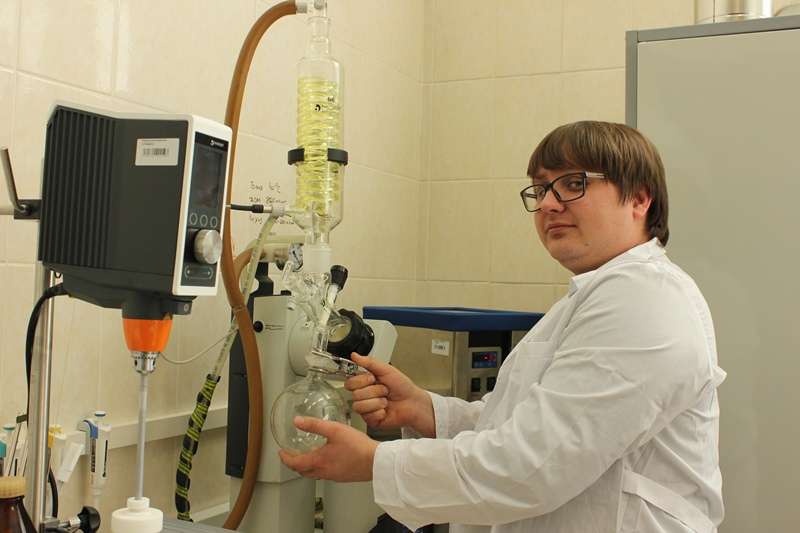Scientists equip chemical sensors with 'traps' to detect toxic substances

Scientists from Tomsk Polytechnic University and the University of Chemistry and Technology (Prague, Czech Republic) have created novel chemical sensors for Raman spectrometers, devices that measure the quantitative and qualitative composition of substances and their structures with high accuracy. They have equipped sensors with organic chemical compounds and for determining dyes prohibited in Europe and heavy metals in water at ultralow concentrations.
The latest outcomes of the study have been published in Sensors and Actuators B: Chemical.
The sensors consist of a multi-layer material based on a thin gold film measuring 1x0.5 cm. The surface of the substrate is modified into a wave-like structure. Using special reagents, TPU scientists graft organic compounds on the surface of the substrate by a covalent surface modification via diazonium chemistry.
'The novelty is that we combined both chemical and physical methods,' says Pavel Postnikov, associate professor of the Department of Organic Substances and Polymer Materials. 'Our colleagues in Prague prepared the substrates using physical methods and we modified organic compounds using chemical methods. The resulting sensors were able to detect heavy metals at ultralow concentrations. We can monitor trace concentrations of substances. Thus, the sensitivity of sensors for dyes reaches 10-16 mol, and for heavy metals, it is about 10-14 mol.
'The process of analysis is very simple: We put the sensor into the water, and molecules of toxic substances are immobilized on the surface of the substrate. The analysis of dyes is more difficult,' he says. 'We use an interesting polymer which is water-soluble at room temperature and when heated it turns into an insoluble form. Polymer chains capture dye molecules and, when heated, press them to the surface. Then, we take out the substrate and place it in the spectrometer. We get the result in two minutes.'
In the long term, these sensors may be used to monitor liquids in food technology, medicine and environmental studies.
'It takes several minutes to carry out this analysis. Therefore, it can be used onsite. For example, it is possible to analyze samples from reservoirs and receive an immediate result showing if there are any toxic substances present in the water, even at ultralow concentrations,' says Postnikov.
More information: O. Guselnikova et al, Pretreatment-free selective and reproducible SERS-based detection of heavy metal ions on DTPA functionalized plasmonic platform, Sensors and Actuators B: Chemical (2017). DOI: 10.1016/j.snb.2017.07.018
Provided by Tomsk Polytechnic University





















